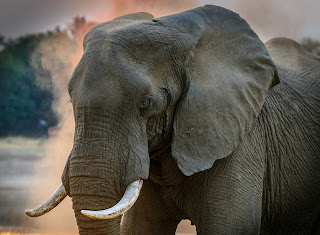Bringing Back the Balance: The Power of Endangered Species Recovery Programs.
Endangered Species Recovery Programs: A Comprehensive Guide to Species Protection and Conservation.
Endangered species are a critical component of our ecosystem and play a vital role in maintaining the delicate balance of nature. However, the increasing human population and its impact on the environment have led to the decline of many species, leading to their designation as endangered. In response to this alarming trend, many organizations and government agencies have developed endangered species recovery programs to conserve and protect these species from extinction.
Species recovery plans are the cornerstone of endangered species recovery programs. They outline the steps and strategies needed to conserve and recover an endangered species. These plans are developed by experts in the field and are based on the latest scientific knowledge, including research on the species' habitat, behavior, and biology.
One of the key components of species recovery plans is habitat protection. Endangered species often require specific habitats to survive, and their decline is often due to loss or degradation of their habitat. Species recovery plans therefore focus on protecting and restoring habitats, as well as reducing threats to them, such as habitat fragmentation and degradation caused by human activities.
Another critical aspect of species recovery programs is breeding and reintroduction. In many cases, endangered species have lost significant portions of their population and may require a captive breeding program to increase their numbers. Once their numbers have stabilized, the species can then be reintroduced into the wild, with ongoing monitoring and management to ensure their success.
In addition to these core components, species recovery programs also often involve community engagement and education. For example, programs may work with local communities to reduce human-wildlife conflicts, or engage in public outreach and education to raise awareness about the importance of conservation and the role of the public in supporting endangered species recovery efforts.
It's worth noting that species recovery programs are complex and challenging, and not all species can be recovered. However, with the right resources, collaboration, and commitment, many species can be saved from extinction.
In conclusion, endangered species recovery programs are critical for conserving and protecting our most threatened species. By implementing species recovery plans, we can help ensure that future generations have the opportunity to experience the beauty and diversity of these unique and irreplaceable species.
Here is 4 FAQ:-
1. What is an endangered species recovery program?
An endangered species recovery program is a conservation initiative aimed at preserving and protecting species that are at risk of extinction. These programs use various methods, such as habitat protection, captive breeding, and reintroduction, to improve the survival and recovery of endangered species.
2. How do endangered species recovery programs work?
Endangered species recovery programs work by identifying the factors that are contributing to the decline of a species and taking action to address these threats. This may involve creating protected habitats, controlling invasive species, reintroducing captive-bred individuals into the wild, or implementing other measures to promote the species' survival and recovery.
3. Why are endangered species recovery programs important?
Endangered species recovery programs are important because they help to prevent the extinction of species that are at risk. They also help to maintain biodiversity and ecological balance, which are essential for the health and stability of ecosystems.
4. How can I get involved in endangered species recovery programs?
You can get involved in endangered species recovery programs by supporting organizations and initiatives that are working to conserve endangered species. You can also take action in your own community, such as supporting habitat protection efforts, reducing your impact on the environment, and educating others about the importance of species conservation.






Comments
Post a Comment